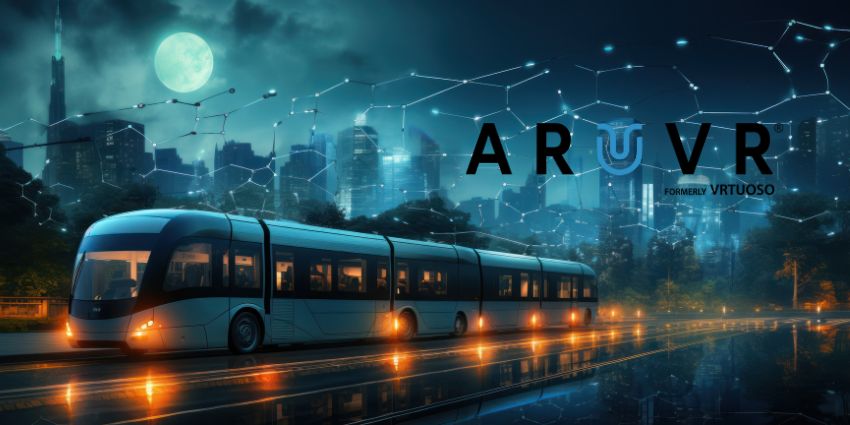Hand and eye tracking are crucial, integral tools to create the most authentic extended reality (XR) experiences. Market leaders have relied on the technologies to build interactive, secure human-computer interfaces (HCIs) capable of offering multiple benefits.
Tobii has remained at the forefront of these solutions, recognising that eye-tracking tools pilot the world’s top immersive experiences. The Danderyd Municipality, Sweden-based firm has led markets since 2001, offering headset manufacturers, and software developers top-tier solutions for doing so.
The company also has a longstanding relationship with major hardware component manufacturers such as Qualcomm Technologies. It is likely to continue such collaborations with the San Diego-based tech giant with the release of the latter’s Augmented Reality (AR) 2 Gen 1 hardware platform.
XR Today interviewed Emma Bauer, Senior Vice President of Segments & Products, on Tobii’s latest eye-tracking innovations.
XR Today: Can you explain why eye tracking is essential to quality immersive experiences?
Emma Bauer: Two main forces are driving the quality of immersive experiences: device optimization and the social interaction user experience (UX).
Device Performance
You want users to be comfortable and stay in a world with a full-resolution experience. This requires an automatic adjustment of interpupillary distance (IPD) and longer battery life.
You also need the devices to be light and comfortable, but at the same time provide immersive graphics. To facilitate this, you would need massive computing power and Tobii’s solutions can help improve people’s experience in this way.
By understanding where the user is looking in this digital world, the need for computing and networking can be significantly reduced with foveated rendering, which creates a realistic feel for the user without being cost or prohibitive technologically.
Social interaction
Eye tracking makes the VR and AR experience more closely resemble the real world for users, making it more immersive. For example, we want users to be able to hold eye contact with others, look around, and engage in realistic blinking patterns. The only way to accomplish this is through eye tracking.
We also need all users worldwide to have the same experience, and Tobii’s eye tracking has the largest population coverage because we’ve been doing this for over two decades.
XR Today: What are Tobii’s latest ventures in eye-tracking and what do the solutions aim to accomplish?
Emma Bauer: Our latest venture in the field is the Tobii XR5 Platform, which is ready for customers who embrace pancake optics designs for a thinner, sleeker look and smoother user experience.
The platform also supports AR smart glasses with an optimised form-factor, streamlined integration, and resource-efficient solution. We use standard components and Tobii-optimized placement to ensure a product fit for mass production in the headset design.
It requires only a few simple components which can be integrated without invasive changes to the overall design of the headsets. Our algorithms and component drivers are optimized for low latency and minimal power consumption to minimize resource usage.
We also made significant investments in device optimization. Our solution for auto IPD, positioning guide, and slippage compensation help ensure optimal comfort and image quality in XR and help users view the display with full clarity by not missing the optical sweet spot.
XR Today: How have metaverse platforms such as Ready Player Me and LIV leveraged your tools, and which solutions have you deployed in the partnership?
Emma Bauer: Tobii has paved the way for eye-tracking to become a ubiquitous part of modern metaverse devices. Multiple platforms like Ready Player Me and LIV can leverage these capabilities, drawing on the core technologies and expertise from Tobii.
They can also access the digital ecosystem through our XR Unity SDK and Developer Zone. We conducted this experiment with LIV showcasing our eye-tracking gaze visualization streaming Racket:Nx on their platform.
XR Today: How will your technologies deepen immersion for future metaverse users? Can you provide your thoughts on the current progress of developing the Metaverse as a unified platform for spatial communications?
Emma Bauer: Our technology plays a huge part in allowing users to truly have an embodied presence and immerse themselves in the Metaverse in the most natural way possible.
The Metaverse is about community, and to make these interactions truly meaningful, we must fully enable people to communicate using verbal and non-verbal means.
Tobii’s attention computing technologies address one of the key gaps in our digital interactions today: expressing our attention and intent to each other.
Our eye tracking tackles big optical and usage challenges like image distortion and VAC. We also solve issues around device performance, like power consumption.
Ultimately, our eye tracking makes metaverse hardware like VR and AR headsets and other wearables easy and comfortable to use and immersive to experience.
While Tobii is known as the world leader in eye tracking, we are also the pioneer in attention computing. This means our solutions — including head tracking — enable machines and devices to understand people’s intentions and attention.
We aim to integrate our solution with the largest original equipment manufacturers (OEMs) in the XR industry. Additionally, we also hope to drive innovation for other VR-enabled verticals such as healthcare, research, and training.







